
Is your dishwasher failing to deliver those sparkling clean dishes you were expecting? Don’t worry, we’ve got you covered! In this article, we’ll guide you through 5 simple steps that can help you troubleshoot and fix any issues with a dishwasher that leaves your dishes dirty. So say goodbye to grimy plates and silverware – with these easy tips, your dishwasher will be back to its efficient cleaning ways in no time!
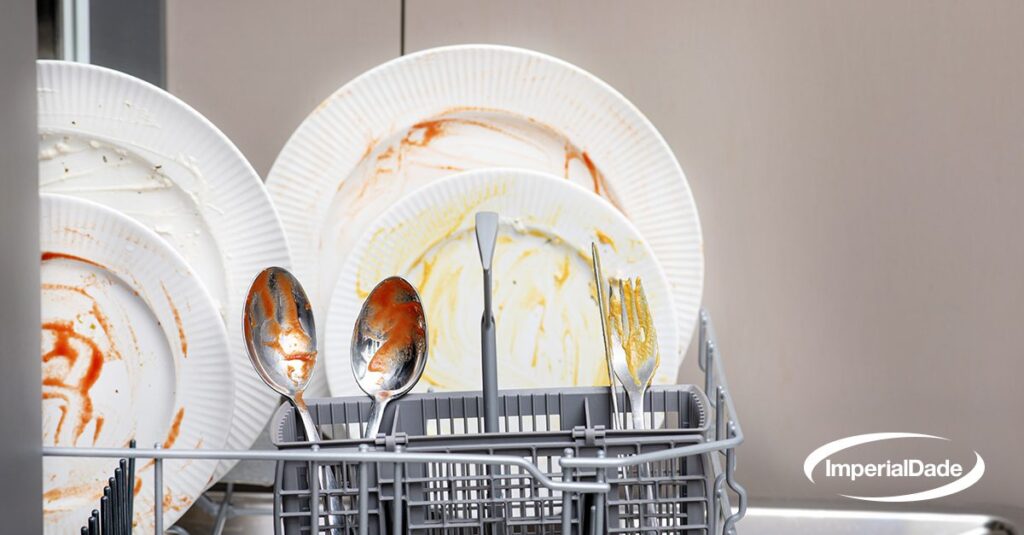
This image is property of imperialdade.blog.
1. Check the Water Inlet Valve
When your dishwasher isn’t cleaning dishes properly, one of the first things you should check is the water inlet valve. This valve is responsible for bringing water into the dishwasher during the cleaning cycle. If it is clogged or not functioning properly, it can result in poor cleaning performance.
1.1. Inspect the Inlet Valve for Clogs
Start by inspecting the water inlet valve for any clogs that may be blocking the water flow. Locate the valve, which is usually located at the bottom of the dishwasher, behind the kick plate. Ensure that the dishwasher is disconnected from the power source before attempting any repairs.
Once you’ve located the inlet valve, carefully examine it for any debris or foreign objects that may be obstructing the flow of water. Use a small brush or toothbrush to gently clean the valve if you notice any clogs.
1.2. Test the Inlet Valve for Proper Functioning
After ensuring that the inlet valve is free from any clogs, you should test its functionality. To do this, turn on the dishwasher and start a new cleaning cycle. Listen for a humming sound coming from the valve, indicating that it is opening to allow water to flow. If you don’t hear this sound or notice any water flowing into the dishwasher, it may be a sign of a faulty inlet valve that needs to be replaced.
2. Examine the Spray Arms
The spray arms in your dishwasher play a crucial role in ensuring that dishes are thoroughly cleaned. If they are clogged or not functioning properly, they can lead to dirty dishes even after a cleaning cycle.
2.1. Remove and Clean the Spray Arms
Start by removing the spray arms from the dishwasher. They are usually located at the bottom and top of the dishwasher. Gently twist or unscrew them to detach them from their mounting brackets.
Once removed, inspect the spray arms for any clogs or blockages. Rinse them under warm water to remove any debris and use a small brush or toothpick to clean the spray arm openings. Pay close attention to the small nozzles or holes, as they can easily become obstructed.
2.2. Check for Blockages in the Spray Arm Openings
While you have the spray arms removed, also check for blockages in the spray arm openings. Sometimes, small food particles or mineral deposits can accumulate and block the water from flowing properly. Use a toothpick or similar tool to clear any obstructions you find.
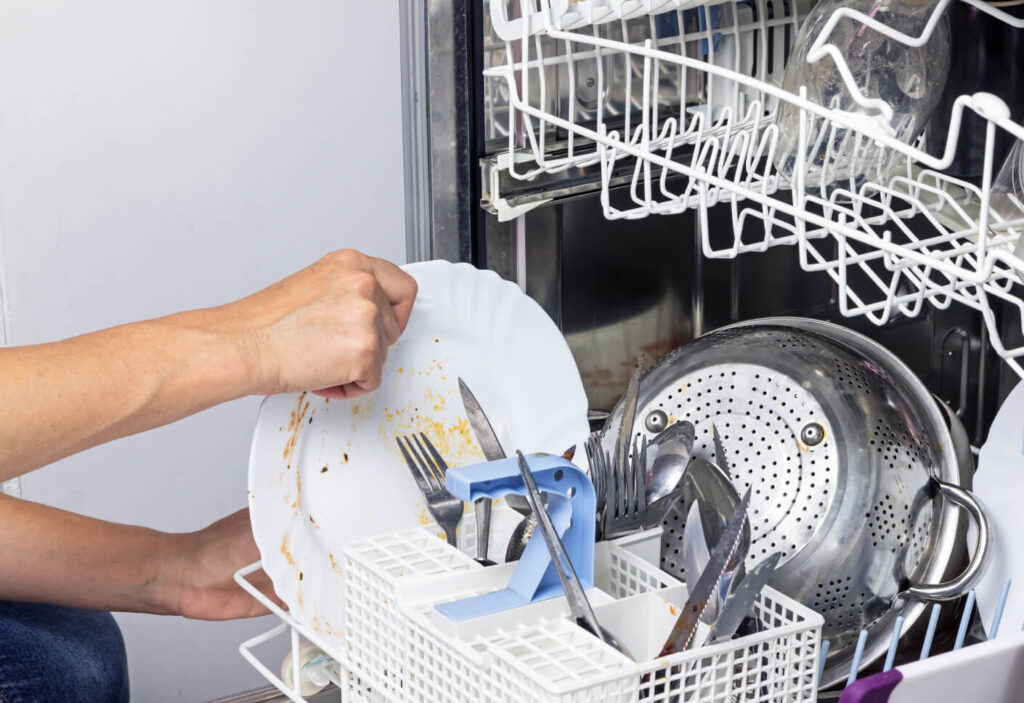
This image is property of appliancerepairexpert.ca.
3. Inspect the Filters
Most dishwashers have filters that trap food particles and debris during the cleaning process. Over time, these filters can become dirty and clogged, affecting the dishwasher’s ability to clean dishes effectively.
3.1. Locate the Filters
Consult your dishwasher’s manual to locate the filters. They are usually found at the bottom of the dishwasher, beneath the spray arms. Remove any removable parts or baskets to access the filters.
3.2. Clean or Replace the Filters
Inspect the filters for clogs or debris. If they are dirty, remove them and rinse under warm water to remove any food particles or residue. For filters that are excessively dirty or damaged, it may be necessary to replace them with new ones. Refer to your dishwasher’s manual or contact the manufacturer for the correct replacement filters.
4. Evaluate the Detergent Usage
Using the right detergent and using it correctly is crucial for achieving clean dishes. If you’re experiencing dirty dishes, it’s worth evaluating your detergent usage.
4.1. Use the Recommended Detergent
Ensure that you are using the correct detergent recommended for your dishwasher. Different dishwashers may have different requirements, so refer to the user manual or contact the manufacturer for guidance. Using the wrong detergent or an inadequate amount can lead to ineffective cleaning.
4.2. Check the Detergent Dispenser
Inspect the detergent dispenser in your dishwasher. Make sure it opens properly during the cleaning cycle and releases the detergent as intended. If it is not functioning correctly, it may require cleaning or replacement. A malfunctioning dispenser can prevent the detergent from being properly distributed, resulting in dirty dishes.
4.3. Adjust the Detergent Amount
If you are using the correct detergent and your dispenser is working properly, consider adjusting the amount of detergent you use. Using too little detergent may not provide enough cleaning power, while using too much can leave residue on the dishes. Experiment with different amounts to find the right balance for your dishwasher and water hardness level.
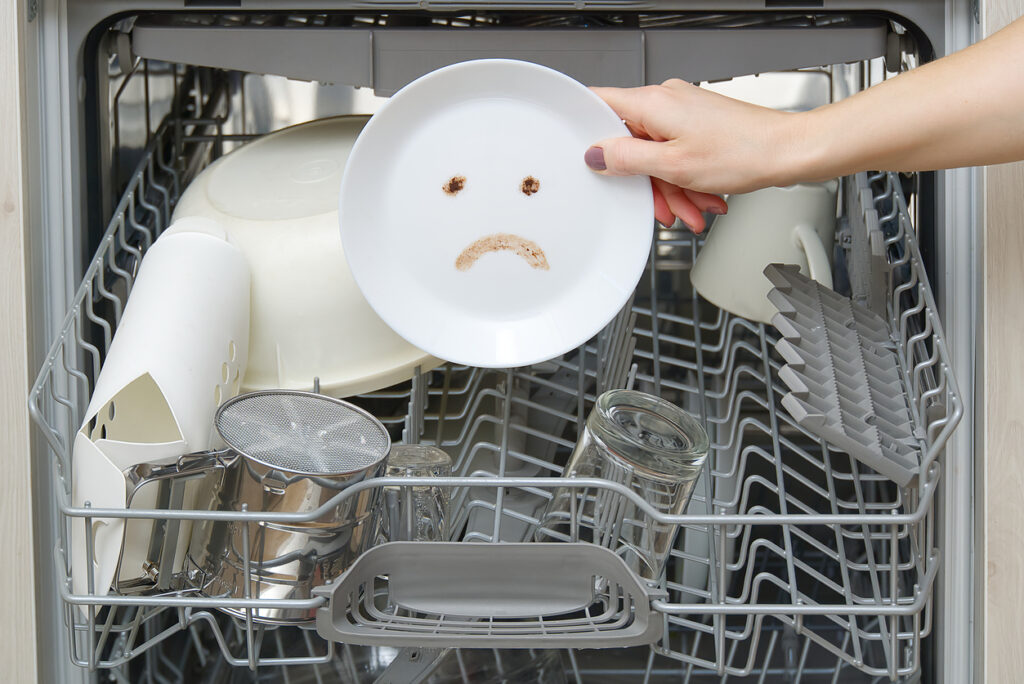
This image is property of d12mivgeuoigbq.cloudfront.net.
5. Examine the Water Temperature
The water temperature in your dishwasher can greatly impact its cleaning performance. If the water is not hot enough, it may not effectively remove grease and food particles from the dishes.
5.1. Check the Hot Water Supply
Ensure that your dishwasher is connected to a hot water supply. It is recommended to set your water heater temperature to at least 120°F (49°C) to achieve optimal cleaning results. If the hot water supply is inadequate, it can affect the dishwasher’s ability to clean dishes thoroughly.
5.2. Test the Dishwasher’s Heating Element
If you have confirmed that your hot water supply is not the issue, it is time to examine your dishwasher’s heating element. The heating element is responsible for raising the water temperature during the cleaning cycle. If it is faulty or not working correctly, it may be the reason behind your dirty dishes.
Refer to your dishwasher’s manual or contact the manufacturer for instructions on testing the heating element. If you discover that it is not functioning properly, you may need to replace it to restore your dishwasher’s cleaning performance.
6. Verify Proper Loading Technique
The way you load your dishwasher can also impact its cleaning effectiveness. Improper loading can prevent water from reaching all the surfaces of the dishes and lead to dirty dishes.
6.1. Arrange Dishes Properly
Take the time to arrange your dishes properly, ensuring that they are not blocking each other and allowing water to reach all surfaces. Avoid overcrowding the dishwasher as it can obstruct the spray arms and prevent proper cleaning.
Place larger items such as pots, pans, and cutting boards on the bottom rack, while smaller dishes and utensils should go on the top rack. Face all the soiled surfaces towards the center or spray arms for maximum cleaning efficiency.
6.2. Do Not Overload the Dishwasher
While it may be tempting to load as many dishes as possible into the dishwasher, overloading can hinder its performance. Overcrowding can prevent water and detergent from reaching all the dishes effectively, resulting in inadequate cleaning. Leave sufficient space between dishes and follow the manufacturer’s guidelines for maximum loading capacity.
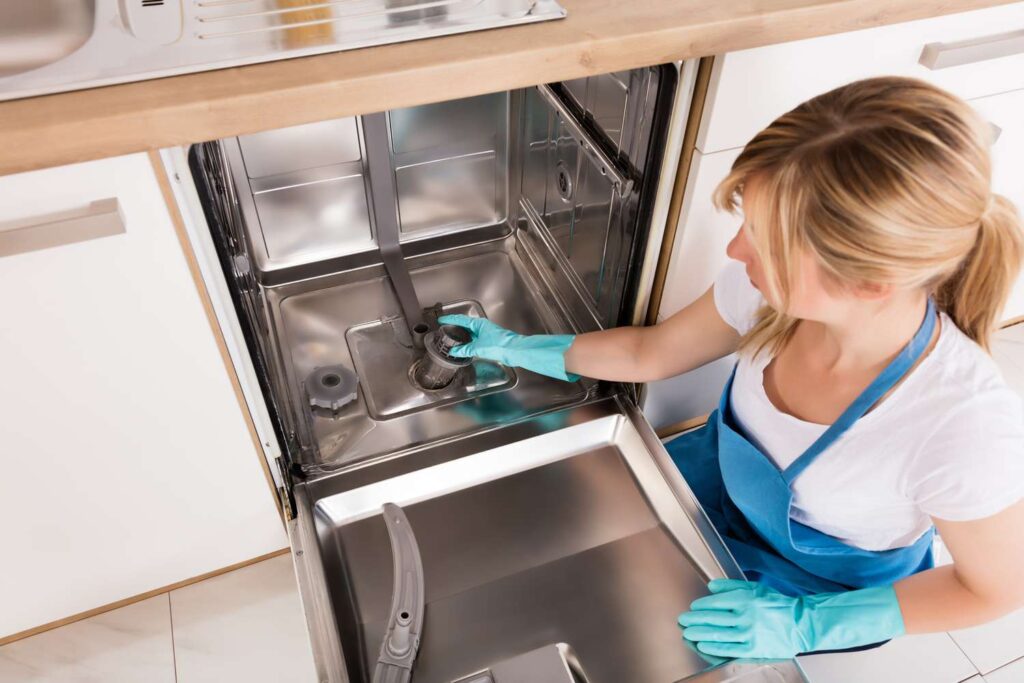
This image is property of www.thespruce.com.
7. Consider Water Hardness Levels
The hardness of your water can influence how well your dishwasher cleans dishes. Hard water contains minerals that can cause residue and spots on your dishes. Taking steps to address water hardness can improve the dishwasher’s cleaning performance.
7.1. Test the Water Hardness
Test the hardness of your water using a water hardness test kit. These kits are available at hardware stores or online. Follow the instructions provided with the kit to determine the hardness level of your water.
7.2. Use Water Softening Products
If your water is found to be hard, consider using water softening products specially designed for dishwashers. These products help to reduce the mineral content of the water, preventing the buildup of residue and spots on your dishes. Follow the manufacturer’s instructions for the proper use of water softening products.
8. Inspect the Spray Arm Bearings
The spray arm bearings play a vital role in the proper functioning of the spray arms. If they are worn or damaged, it can result in ineffective cleaning.
8.1. Check for Worn or Damaged Bearings
Inspect the spray arm bearings for any signs of wear or damage. If you notice any cracks, breakage, or signs of corrosion, it may be necessary to replace the bearings. Worn or damaged bearings can cause the spray arms to move improperly or not at all, affecting the cleaning performance.
8.2. Replace Faulty Spray Arm Bearings
If you determine that the spray arm bearings are indeed faulty, contact your dishwasher’s manufacturer or a professional repair service to obtain replacement bearings. Once you have the new bearings, follow the manufacturer’s instructions or seek professional help to replace them correctly.
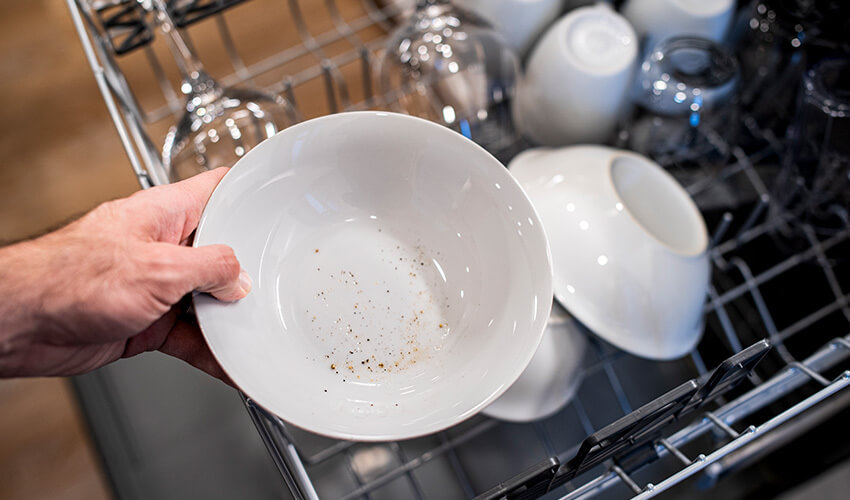
This image is property of www.mrappliance.com.
9. Evaluate the Dishwasher’s Motor
A malfunctioning dishwasher motor can also contribute to dirty dishes. Issues with the motor can result in inadequate water circulation and spray arm movement, affecting the cleaning performance.
9.1. Listen for Unusual Noises
During a cleaning cycle, listen for any unusual noises coming from the dishwasher. Grinding, squealing, or knocking sounds could indicate motor problems. If you notice such noises, it may be a sign that the motor needs attention or replacement.
9.2. Test the Motor’s Functionality
If you suspect an issue with the dishwasher motor, it is recommended to consult a professional repair service. Testing and troubleshooting the motor requires expertise and specialized equipment. A professional technician will be able to evaluate the motor’s functionality and determine if any repairs or replacements are necessary.
10. Contact a Professional Repair Service
If you have followed all the troubleshooting steps mentioned above and your dishwasher still leaves dishes dirty, it may be time to seek expert advice and contact a professional repair service.
10.1. Seek Expert Advice
Reach out to the manufacturer’s customer support or a reliable appliance repair service in your area. Explain the issue you are experiencing and the troubleshooting steps you have already taken. They will be able to provide you with further guidance and recommend the best course of action.
10.2. Schedule a Repair Appointment
If the expert advice suggests that a professional repair is required, schedule an appointment with a qualified technician. They will have the knowledge and experience to diagnose and fix any underlying problems with your dishwasher, ensuring that it operates at its optimal performance and delivers sparkling clean dishes once again.
Remember, troubleshooting a dishwasher can sometimes be challenging, especially if you are not familiar with the inner workings of the appliance. Therefore, it is always recommended to seek professional assistance if you are unsure or uncomfortable with performing any repairs yourself.



